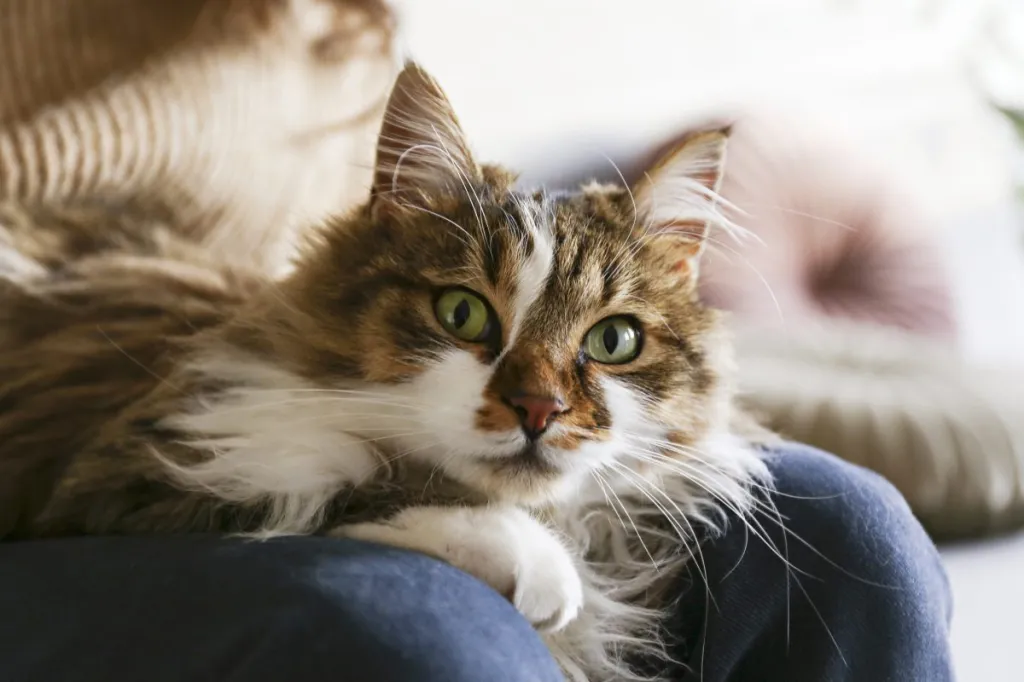The Ragamuffin cat, known for its endearing personality and luxurious appearance, is a delightful breed characterized by their large size, expressive eyes, and silky, semi-longhair coats. While their name might suggest otherwise, Ragamuffins exude charm and grace. These affectionate felines also have a gentle nature and love to be the center of attention. They form strong bonds with their human companions.
Originating as a variant of the Ragdoll breed, Ragamuffins share many of their predecessor’s distinctive traits. Their plush fur comes in an array of colors and patterns, making each Ragamuffin cat unique and visually striking. Beyond their stunning appearance, Ragamuffin cats have a laid-back temperament, making them an excellent choice for families, singles, and seniors alike. Their sociable nature extends to other pets, and they are often described as “puppy-like” due to their willingness to follow their owners from room to room.
When considering a Ragamuffin, it’s advisable to prioritize adopting from rescue organizations or shelters to provide a loving home to a cat in need. However, if you decide to purchase, it’s crucial to choose a reputable breeder. Conduct thorough research to ensure that the breeder follows ethical practices and prioritizes the well-being of their cats. Reputable Ragamuffin breeders prioritize the health and temperament of their cats, conduct necessary health screenings, and provide a nurturing environment for the kitties. This active approach ensures that you bring home a healthy and happy kitty while discouraging unethical breeding practices.
Quick Facts
- Origin: United States
- Size: Large
- Breed Group: Semi-longhair
- Lifespan: 12-18 years
- Coat: Long, plush, and rabbit-soft, with a variety of colors and patterns
- Temperament: Gentle, affectionate, and playful
- Exercise Needs: Moderate
- Training: Easy to train
- Grooming: Weekly brushing
- Health: Generally healthy, but can develop genetic health conditions, such as hypertrophic cardiomyopathy (HCM) and polycystic kidney disease (PKD)
- Sometimes the Ragdoll and the Ragamuffin are referred to as “Daughters of Josephene,” the original Ragdoll from which the line began.
- All Ragdolls must exhibit the colorpoint pattern of a Ragdoll, while Ragamuffins can be any color except colorpoint.
- Ragamuffins are born white, and later develop their coloring.
Ragamuffin Pictures
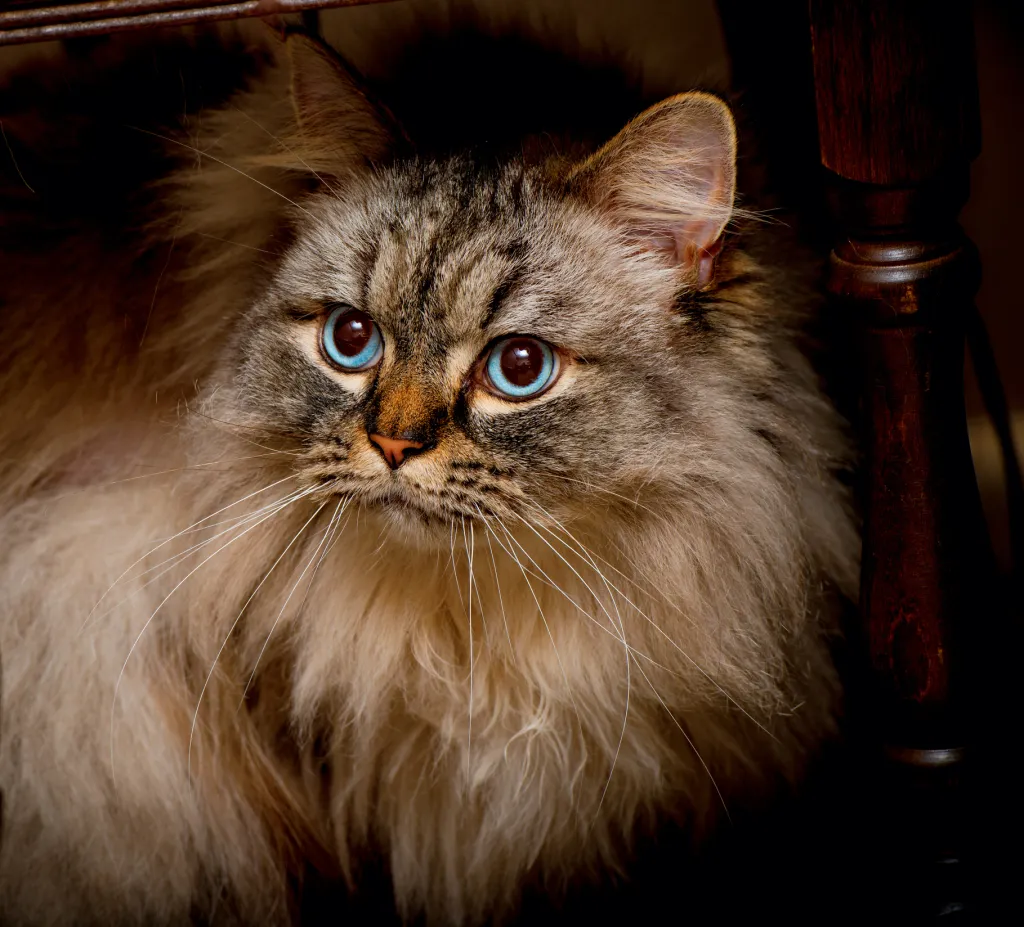
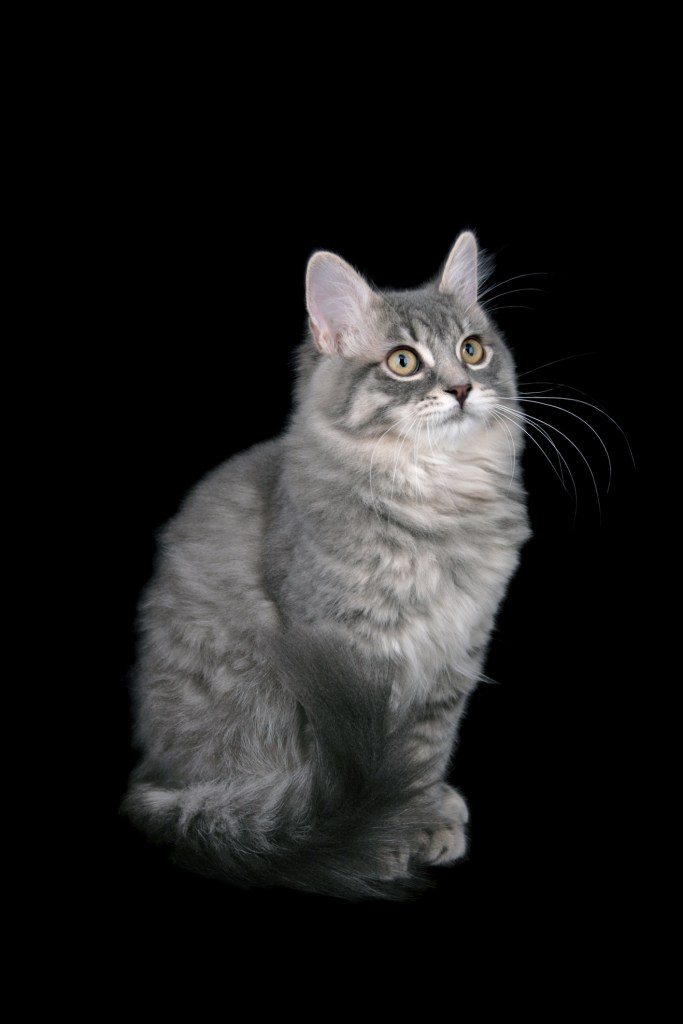
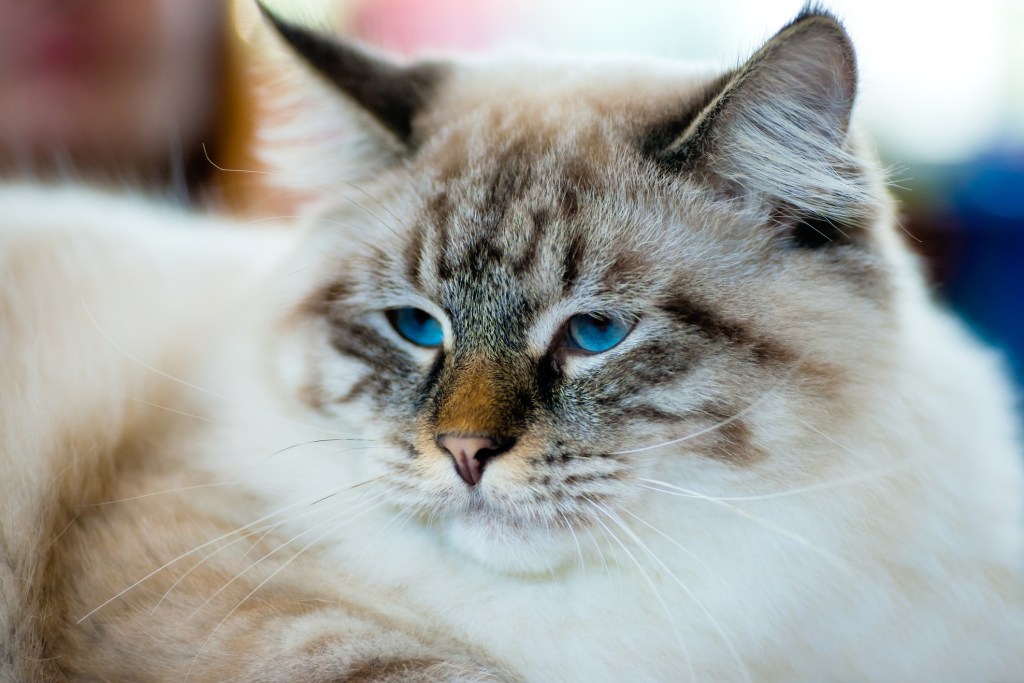
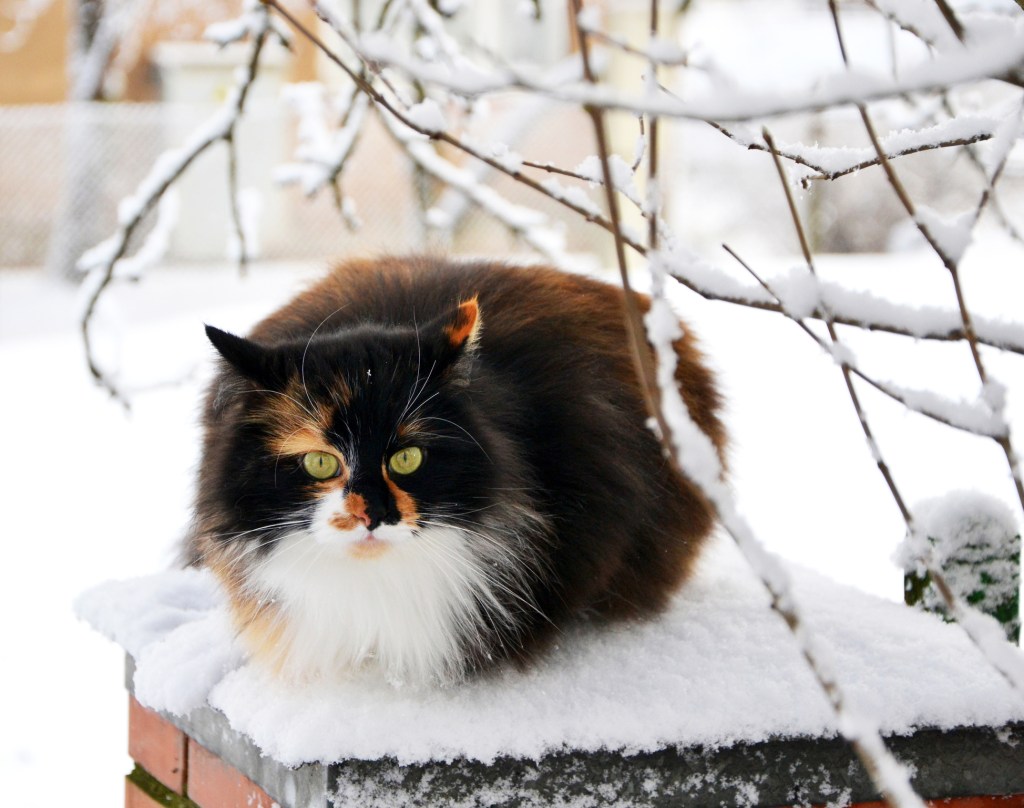
-
Affectionate with Family
Some cat breeds are typically independent and aloof, even if they’ve been raised by the same person since kittenhood; others bond closely to one person and are indifferent to everyone else; and some shower the whole family with affection. Breed isn’t the only factor that goes into affection levels; cats who were raised inside a home with people around feel more comfortable with humans and bond more easily.

See Cats Less Affectionate with Family -
Amount of Shedding
If you’re going to share your home with a cat, you’ll need to deal with some level of cat hair on your clothes and in your house. However, shedding does vary among the breeds. If you’re a neatnik, you’ll need to either pick a low-shedding breed or relax your standards. This furniture cover can make it easier to clean up cat hair and keep it off your sofa!
-
General Health
Due to poor breeding practices, some breeds are prone to certain genetic health problems. This doesn’t mean that every cat of that breed will develop those diseases; it just means that they’re at an increased risk. If you’re looking only for purebred cats or kittens, it’s a good idea to find out which genetic illnesses are common to the breed you’re interested in.
-
Potential for Playfulness
Some cats are perpetual kittens—full of energy and mischief—while others are more serious and sedate. Although a playful kitten sounds endearing, consider how many games of chase the mouse-toy you want to play each day, and whether you have kids or other animals who can stand in as playmates. A classic wand cat toy like this one is perfect for playful felines!
-
Tendency to Vocalize
Some breeds sound off more often than others with meows, yowls, and chattering. When choosing a breed, think about how the cat vocalizes and how often. If constant “conversation” drives you crazy, consider a kitty less likely to chat.
-
Kid-Friendly
Being tolerant of children, sturdy enough to handle the heavy-handed pets and hugs they can dish out, and having a nonchalant attitude toward running, screaming youngsters are all traits that make a kid-friendly cat. Our ratings are generalizations, and they’re not a guarantee of how any breed or individual cat will behave; cats from any breed can be good with children based on their past experiences and personality.
-
Friendly Toward Strangers
Stranger-friendly cats will greet guests with a curious glance or a playful approach; others are shy or indifferent, perhaps even hiding under furniture or skedaddling to another room. However, no matter what the breed, a cat who was exposed to lots of different types, ages, sizes, and shapes of people as a kitten will respond better to strangers as an adult.
-
Easy to Groom
Some breeds require very little in the way of grooming; others require regular brushing to stay clean and healthy. Consider whether you have the time and patience for a cat who needs daily brushing. You should definitely pick up this awesome de-shedding tool for cats of any hair length!
-
Intelligence
Some cat breeds are reputed to be smarter than others. But all cats, if deprived the mental stimulation they need, will make their own busy work. Interactive cat toys are a good way to give a cat a brain workout and keep them out of mischief. This scratcher cat toy can keep your smart kitty busy even when you’re not home!
-
Pet Friendly
Friendliness toward other household animals and friendliness toward humans are two completely different things. Some cats are more likely than others to be accepting of other pets in the home.
Ragamuffin History
If you are wondering if the Ragamuffin is related to the Ragdoll, the answer is yes. Some breeders wanted to introduce new colors and patterns while others thought it was important to widen the breed’s gene pool. Because the breeding of Ragdolls was strictly controlled by that breed’s founder, Ann Baker, a new group formed to create its own breed. They outcrossed to Persians, Himalayans and domestic longhaired cats, to increase the size and to bring about other changes in appearance that would differentiate the Ragamuffin from the Ragdoll.
The name Ragamuffin was chosen in part as an homage to the founding breed. Cat associations that recognize the Ragamuffin are the United Feline Organization—the first to do so—the American Cat Fanciers Association, the American Association of Cat Enthusiasts, and the Cat Fanciers Federation. The Ragamuffin most recently gained full recognition from the Cat Fanciers Association, in February 2011.
Ragamuffin Size
Females usually weigh 10 to 15 pounds, and some males weigh more than 20 pounds.
Ragamuffin Personality
Like his cousin the Ragdoll, the Ragamuffin is a huggable lug who wants nothing more than to follow his people around and sit in a lap whenever possible. A nice combination of sweet and smart, he is often described as puppylike for his friendly personality and willingness to play fetch, learn tricks and walk on a leash. He greets visitors warmly and would meet you at the door with a martini if only he had opposable thumbs.
The Ragamuffin is known for his docile nature. He loves to be held like a baby and will completely relax into your arms. Ragamuffins like to play but are good about limiting their attentions to their toys and scratching posts, not your furniture. It is rare to nonexistent for them to lay a claw on a person. This is a mellow cat but one who craves attention. Don’t get a Ragamuffin if you will have to leave him alone for many hours every day.
Ragamuffin Health
Both pedigreed cats and mixed-breed cats have varying incidences of health problems that may be genetic in nature. Ragamuffins are generally healthy, but be sure to ask a breeder about the incidence of health problems in her lines and what testing has been done for any that are genetic in nature. It’s also smart not to let this big cat overeat. He is large, to be sure, but he shouldn’t be fat. It’s a good idea to monitor your cat for the following common ailments:
- Polycystic Kidney Disease:
- Patellar Luxation:
Ragamuffin Care
The Ragamuffin’s soft coat is long, but its texture is tangle-resistant. Weekly brushing or combing is all that’s needed to remove dead hairs and keep it looking beautiful. Brush the teeth to prevent periodontal disease. Daily dental hygiene is best, but weekly brushing is better than nothing. Trim the nails every couple of weeks.
Wipe the corners of the eyes with a soft, damp cloth to remove any discharge. Use a separate area of the cloth for each eye so you don’t run the risk of spreading any infection. Check the ears weekly. If they look dirty, wipe them out with a cotton ball or soft damp cloth moistened with a 50-50 mixture of cider vinegar and warm water. Avoid using cotton swabs, which can damage the interior of the ear.
Keep the litter box spotlessly clean. Cats are very particular about bathroom hygiene. The Ragamuffin has a fearless personality, so it’s never a good idea to let him go outside. He has no notion that other people or animals might mean him harm and is not “street smart” in the least. Ragamuffins who go outdoors also run the risk of being stolen by someone who would like to have such a beautiful cat without paying for it.
Ragamuffin Coat Color And Grooming
The Ragamuffin’s breed standard describes him as a cuddly feline teddy bear. He is characterized by his large size, large walnut-shaped eyes that can be any color, sweet expression, and variety of colors and patterns. One of the interesting facts about the breed is that kittens are born white, then develop their color or pattern as they mature.
Some of the differences between the Ragamuffin and the Ragdoll are seen in the face. For instance, the Ragamuffin has full cheeks and the eyes are walnut-shaped rather than oval. The Ragamuffin has a broad, modified-wedge-shaped head with a rounded appearance. It’s supported by a short, heavy, strong neck that is especially apparent in males. Mature males are known for their jowls, giving them something of the look of a crusty old brigadier general.
The broad-chested body is muscular and heavy, often with a pad of fat on the lower abdomen. A long, fully furred tail looks as if it would make a nice, soft bottlebrush. Medium to medium-long fur is rabbit soft, dense and silky. It’s slightly longer around the neck, on the sides and belly, and on the hind legs. The paws and ears are furnished with tufts of fur as well. The coat comes in every color and pattern. This is a large cat, and they mature slowly, not reaching their full size until they are four years old.
Children And Other Pets
The calm and even-tempered Ragamuffin is an ideal family cat. He doesn’t mind being held or carried around by a child or dressed up and pushed in a baby buggy. He is playful and smart, one of those cats who enjoys playing fetch and learning tricks, and his energy level means he won’t wear out before the child does.
Always teach children how to hold the cat properly, supporting both the hind end and the front end, and have little children pet him while they are sitting on the floor or on a sofa so they can be on the same level as the cat without trying to hold him. After all, he may weigh more than they do.
The Ragamuffin is also friendly toward other pets, including dogs, other cats, birds, rodents and lizards. To this gentle giant, everyone is his friend. Nonetheless, it’s always a good idea to introduce pets slowly and in controlled circumstances to ensure that they learn to get along together.
Ragamuffin Rescue Groups
More Info For You
If you’re also looking for a dog, check out DogTime’s dog breed page!
